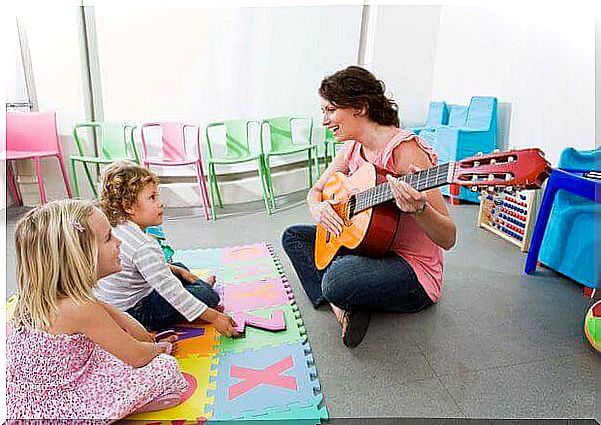Phonological Awareness, The Best Tool To Correct Dyslexia

Have you ever heard of the benefits of phonological awareness training? According to several studies, it is the best method to correct dyslexia. It is a practice implemented from an early age and prevents this disorder from becoming a headache shared by students, parents and educators.
In some ways, this strategy involves developing an important pre-reading skill. So, let’s try to understand what this practice is and why it is so effective. Discover in this article the solution to one of the most frequent children’s problems today.
Phonological awareness, what exactly is it?
Phonological awareness consists of developing the ability to mentally manipulate the sounds of language. Its particularity resides in the total absence of written language. In other words, reinforcing the spoken word without resorting to the field of reading and writing beforehand.
That is why a wide range of activities in which this rule is present is put into practice. For example, deciding whether a certain sound is in a word, separating the syllables, or substituting one phoneme for another. It is also possible to approach this method through playful tools, as effective and useful as they are fun.
The choice of specialists in the field of this type of strategy is not casual. That’s because a series of studies and surveys have confirmed an impactful relationship. A phonological deficit was identified in the vast majority of dyslexic students.
This detail, which is not insignificant, goes hand in hand with a certainty from the world of science and education. The phonemic identification task is precisely one of the most predictive at the reading level. This is also supported by several studies on early detection of dyslexia.

The key to success and effectiveness
It’s simple. In order for a child to learn to perform mathematical operations, it is essential to teach him in advance the value of numbers. Likewise, for a student to learn to read, he must have certain pre-reading skills previously developed.
Generally, most dyslexics have not developed these pre-reading skills correctly. That’s why they often face the process of learning to read without being prepared for it. Hence the so-called “school failure” and childhood frustration.
Thus, these children are unable to advance in the acquisition of basic and elementary knowledge of the stage in which they are. That’s exactly what creates the feeling of oppression, dealing with a set of symbols and sounds that don’t seem to make sense.
True knowledge is not absorbed until a person becomes his own self. This necessarily implies that the student integrates it with their previous knowledge, being able to understand, analyze and relate them. Obviously, all this without the need to resort to external stimuli.
Precisely training in phonological awareness allows the student to understand the segmental structure of language. This develops your skills to discriminate, categorize, associate and synthesize incoming linguistic information.
Phonological awareness: important considerations

Of course, the reference to a pre-reading skill means that you need to develop it – as the name implies – before you start reading and writing. With the beginning of learning to read and as the child grows, training in phonological awareness will lose its effectiveness.
However, students are usually treated when it is too late. That is, parents and educators tend to wait to provide this attention to the child when the delay in relation to their peers is more than considerable.
Therefore, in the case of the little ones who are already learning to read, this tool is included in the intervention program, but without further elaboration. Simply the (most basic) method is combined with initial literacy activities.
Of course, the focus will always be mainly on the difficulties shown by the child and on the segments that generate the most confusion. Therefore, it is essential to schedule adequate training, avoiding activities that have no effect due to the child’s age and its complications.
In short, experts say that phonological awareness training should be practiced on children who are between 4 and 7 years old. It is also recommended to adopt an increasing difficulty progression procedure to achieve wonderful results in learning to read and write.








